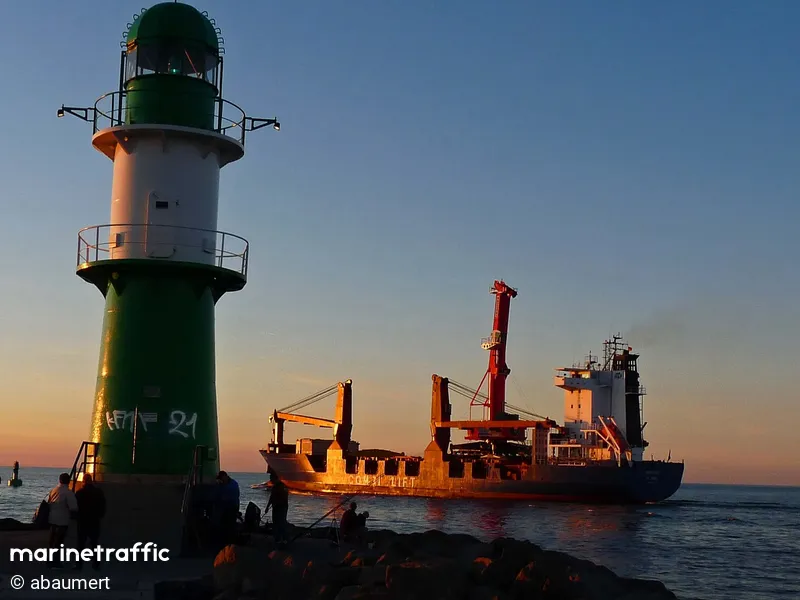Those who follow maritime news might have heard about a dramatic scenario unfolding around the containership MV Rena, which on October 5 struck a submerged stretch of rock about 15 miles from Tauranga, a port on New Zealand's North Island.
The reasons haven't been given but faulty navigation is probably on investigators' short list, given that the ship was making its full speed of 17 knots when it struck a reef that's well-known to mariners. Ironically if so: the obstruction is called Astrolabe Reef, after the early navigation instrument.
NZ authorities say a high-speed freighter grounding in the open sea is so rare there are no standard operating procedures written up to guide the emergency response effort and salvage work. Meanwhile, the captain has been arrested.
The Rena is a Greek-owned, Liberian-flagged containership. The crew numbered 17. Containers are stacked up to seven high. Here's an overflight video.
Here's how it looked before the weather went bad: The situation has deteriorated quite a bit given high seas, with 70 containers having tumbled off and more to follow:
Waves up to 13 feet high worsened the ship's lean, which at last report was 19 degrees off vertical. Here's a magnification of the previous photo, with yellow-highlighted boxes near the bow that are about to break loose. Note that there are gaps showing, an indication that the lashings are in the process of failing. Another cause for containers breaking loose is when a box collapses under the compressive loads.
Meanwhile the ship is taking on water and grinding down high points on the reef. Blobs of fuel oil from a two-thousand-ton supply in the ship's bunkers are washing onto beaches in the Bay of Plenty. Residents at a meeting in Tauranga were upset that off-loading of fuel oil hadn't been started and finished during four initial days of good weather. They also were concerned about the proposed use of Corexit 9500 dispersant instead of deploying floating booms.
Given the equipment, decent weather, and a barge or tanker to put the stuff in, it's not hard to pump hundreds of tons of fuel oil out of a ship. This particular job was hampered by the collision of the receiving tanker with the Rena, and then the evacuation of shipboard personnel due to heavy weather and a dangerous lean.
As containerships go, the 21-year-old Rena is on the smallish side, at 47,230 deadweight tons. Before the drama began, it was carrying 1,351 containers. The biggest of the new breed of post-Panamax containerships -- meaning, ones too wide to fit through the Panama Canal -- will be hauling six times that many trailer equivalent units, called TEUs in the trade. (A TEU is a 20-foot-long, sturdy metal shipping container. The common 40-foot-long box like you see on the highway or in a train is two TEUs).
A floating crane is en route from Singapore with the stated plan of plucking containers from the stack, to lighten the ship and make refloating possible. I don't know which one, but here's a link to the QP 2000, a big derrick barge that sometimes operates out of Singapore.
The Rena's owners contracted with Svitzer Salvage BV to head the work. They were signed under the famous Lloyd's Open Form, or LOF.
Who says contracts have to be dense beyond human understanding? Here's the simple but meaningful header for the 2000 version of the LOF:
Under the LOF, if a salvor doesn't save what he's agreed to save, it doesn't matter how much he's spent battling the elements. Cash payments are a percentage of the value of whatever equipment or cargo he saves. In general, successful salvors receive 15-20% of the value under an LOF agreement.
Since the containers are lashed to deck fittings with steel rods that need manual labor to release, and given that the Rena is leaning dramatically, and given that the waves are driving it higher onto the rocks, this salvage job is shaping up as a world-class challenge. As Radio New Zealand put it, taking a load off the Rena will be a job "difficult at best."
Here's an account from the ILWU, the longshoreman's union, about the dangers faced when their members got the job of pulling containers off the storm-ravaged APL China ... and that was after the ship was safely tied up in Seattle harbor. Some containers came to pieces when lifted, spilling cargo. Here's a photo of the China in port, from CargoLaw:
Does anyone know if a containership has been offloaded under conditions like those of the Rena? I haven't heard of one.


















